Before we begin, it’s important to briefly note the current nature of the collector car market. All of our experts were unanimous in their opinion that only the so-called ‘best of the best’ cars are currently achieving extraordinary prices and that for everything else, sellers have really had their work cut out to get deals done. However, this more cautious and pragmatic environment only serves to remind us of the myriad non-financial returns offered by these special machines – we were certainly pleased to hear usability as a key factor in a number of our experts’ choices. With that in mind, the following should not be seen as investment tips, but rather cars that will no doubt be filling your Instagram feeds and magazine pages (Classic Driver, included!) in 2019. Let’s dive in, shall we?
X marks the spot
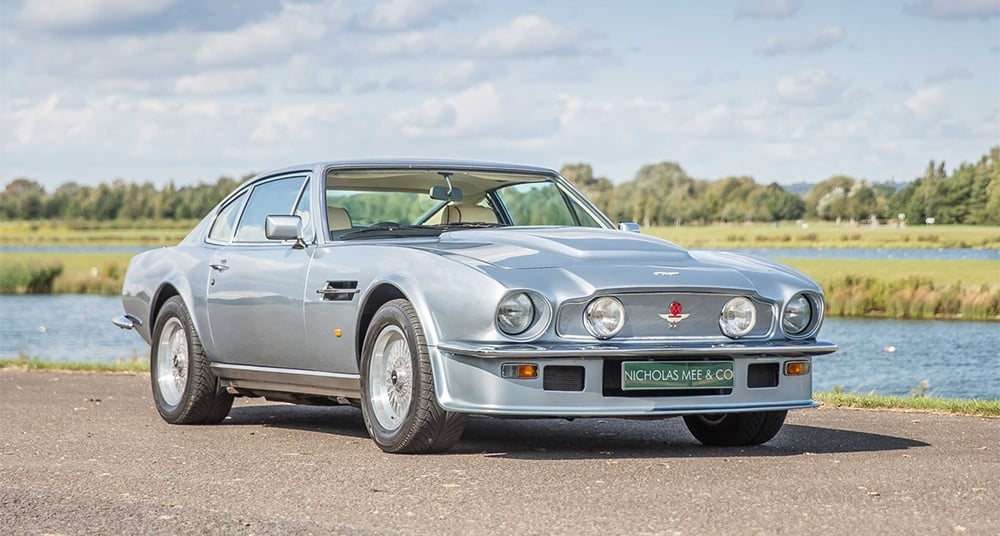
A hand-built British brute that despite weighing more than your average two-up two-down, would comfortably show its heels to a Ferrari Testarossa, the flagship 410bhp X-Pack version of the Aston Martin V8 Vantage is a car that key market influencer Simon Kidston of Kidston SA has seen enjoy a marked increase in interest of late. “There’s been a recent flurry of activity with these cars,” he comments. “And it just goes to show how the V8’s general silhouette might be shared by numerous models over a long period of time, but when you start doing your research and narrow those down to the best of the best, you’re left with a very small number of cars.” In case you’re wondering, Kidston’s ‘best of the best’ is a left-hand-drive, European-specification X-Pack in manual. Finding one is the hard bit – of the circa-137 X-Packs that left Newport Pagnell before 1989, just 43 were left-hand drive and even fewer were equipped with a manual ’box. “It has a great deal of presence, looks good value compared to its six-cylinder ‘DB’ predecessors, and definitely appeals to the current generation of collectors. And in that context of demographic change, this is definitely a car worth watching.”
GT avengers assemble
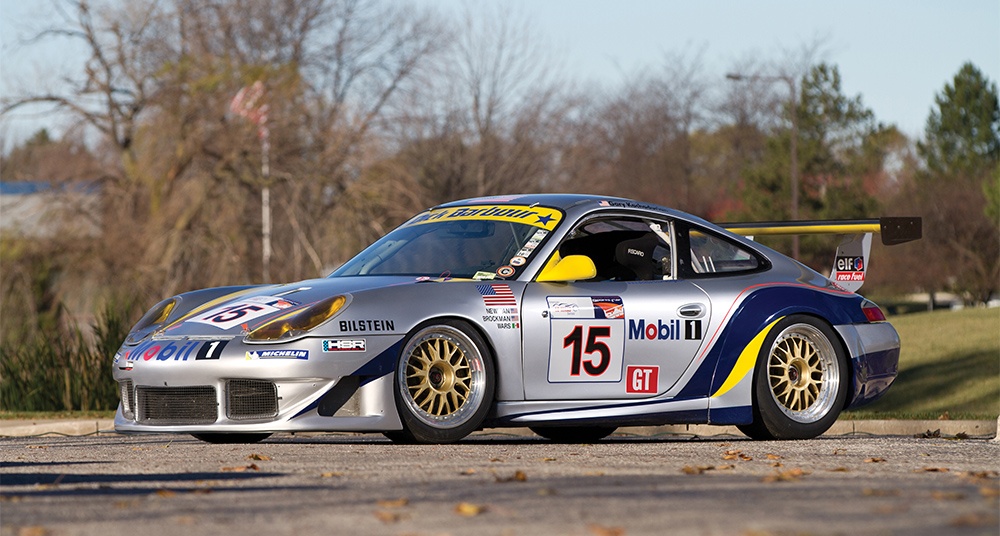
“This the year you’ll see modern-era GT racing cars with notable competition histories and built by prestigious brands such as Ferrari, Porsche, and Aston Martin march forward,” foresees James Cottingham of DK Engineering. He believes the increased worldwide interest in such machines can be attributed to the emergence of not one but two series for which they are eligible: Masters Endurance Legends and Global Endurance Legends, both of which flourished in 2018. “The reason those series have been so successful, particularly the fantastic high-speed demonstration at Le Mans Classic, is because everyone remembers these modern racers so vividly and they closely resemble the cars on which they’re based.” Peter Auto, which hosts Global Endurance Legends at its popular European historic events, recently announced that three competitive races for the series will be held for the first time in 2019. Porsche specialist Lee Maxted-Page couldn’t agree more, claiming now is the time to buy and get involved with this tight-knit yet growing community. Perhaps inevitably, he’d choose a Porsche as his weapon of choice. “Porsche was dominant in world endurance GT racing during the 1990s and 2000s, and the 996 GT3 R and 997 GT3 RSR won virtually everything they entered including the prestigious 24-hour races at Le Mans, Spa, Nürburgring, and Daytona,” he explains. “As always, buy the best you can. Ideally, that would be a car formerly campaigned by a famous team with a recognisable livery, with interesting racing history and in the correct condition.”
Save the Panda

A utilitarian design icon that found as much favour with extravagant Italian industrialists as it did with the working classes, the Giugiaro-designed Fiat Panda 4x4 is beginning to garner a loyal and growing fan base. We’ve long extolled the virtues of this alternative St. Moritz fashion statement and now it seems other influential figures from the collector car world have woken up to them, too. Take Lapo Elkann of Garage Italia Customs, for example, who recently presented a beautifully restored example once used by his grandfather Gianni Agnelli in St. Moritz. Or the new electrified Panda by Carlo Borromeo (also of Automobili Amos fame) built in collaboration with Garage Italia – a novel glimpse at how we might use our classics in a future that restricts – or, heaven forbid, even bans – the use of internal combustion-engined cars. The latter pricked the ears of Arthur Kar of L’Art De L’Automobile in Paris. “The Fiat Panda is a design classic and I love the idea of Carlo’s electric version as you’ll be able to enjoy its timeless looks and simplistic appeal in the city. They’re so cool I think I’m going to sell them in Paris!”
Last of the true hand-built Bentleys?
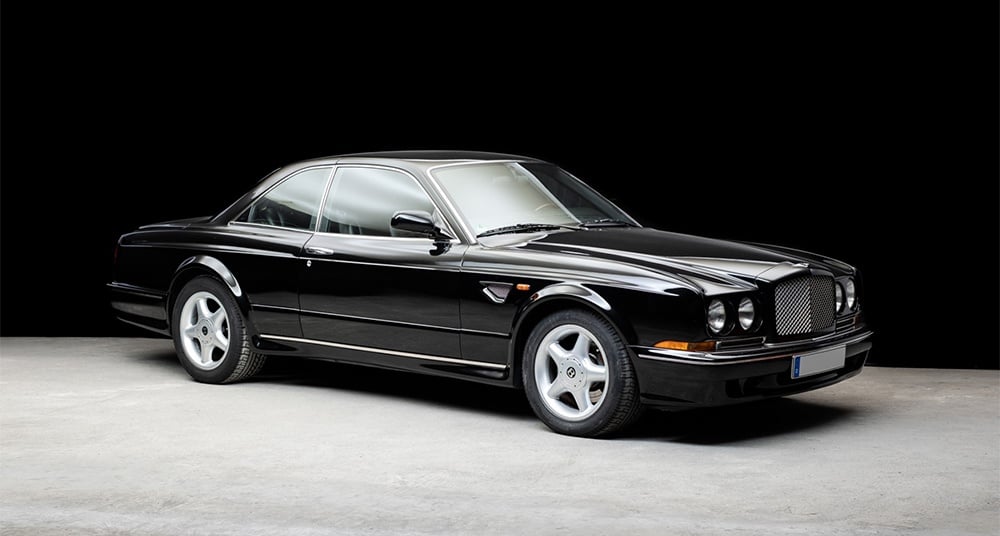
When influential figures such as fashion guru Guglielmo Miani, Automobili Amos frontman Eugenio Amos, and social media mogul Ted Gushue are all coveting a certain car, you know it’s going to be one to watch out for. And so is true of the opulent two-door Bentley Continentals of the 1990s and early 2000s. Simon Kidston is another who sees the appeal, not least because of their current bang-for-buck factor. “In many respects, these cars are the later equivalent of the Aston Martin V8 Vantage X-Pack,” he remarks. “They’re a similar size, boast huge old-fashioned V8s, are rare, and are hand-built so no two are alike.” The bruiser Bentleys in question, particularly those with coachwork by Mulliner, currently represent fantastic value according to Kidston, especially considering how hugely expensive they were new. “Everyone will have a different opinion as to which is best as there are so many sub-variants, but personally I like the Continental T as it’s a sort of modern-day Bentley Blower.” They’re also imposing, impossibly luxurious, and cut a carefree and effortlessly stylish dash.
Significance is key

“We’re not in a rising market and the good buys right now are the cars whose values have already been realigned,” comments Tom Hartley Jnr, “and one of those that I believe has bottomed out is the Porsche 911 Carrera 2.7 RS.” While during the market high point in 2016 he was selling Carrera RSs for £650,000, Hartley cites a straight and true car can be bought today for in the region of £500,000. “With prices of contemporary limited-edition 911s surging so high, people feel more comfortable spending similar money on an older and more historically significant model.” Dietrich Hatlapa of the Historic Automobile Group International concurs. “The smart money always looks at what’s gone down and the Carrera RS has certainly fallen out of favour over the last year,” he explains. “Of course, there are 1,500 cars out there, and we believe volume is the reason the HAGI Porsche index has dropped by almost five percent this year, but we’ve seen cars we know are solid examples sitting in showrooms for months and months. In a market where buyers are very much in the driver’s seat, there are great deals to be had for what is undoubtedly one of the greatest cars ever built.”
Straßenversions
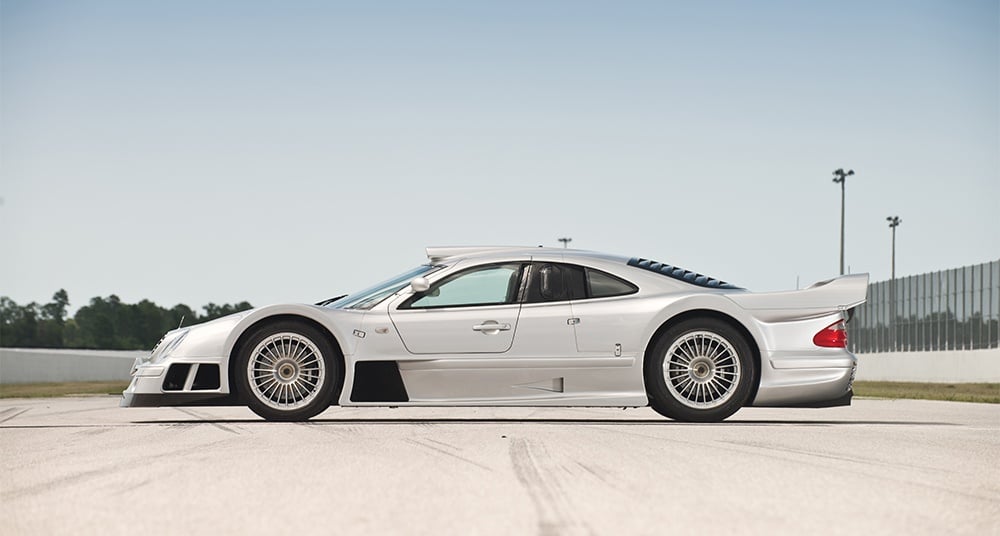
Max Girardo of Girardo & Co. reckons the most epic period of modern-era endurance racing was the late 1990s, when AMG-Mercedes’ CLK GTR and Porsche’s 911 GT1 took the fight to McLaren’s dominant F1. As a result, he thinks the wild and ultra-rare road-going homologation versions of each have yet to realise their true potential, especially given how the aforementioned McLaren has soared into the stratosphere. “McLaren F1 values are rocketing so high that for around a quarter of the price, the rarer CLK GTR and 911 GT1 Straßenversion are now attractive and worthy alternatives,” he comments. “There are just 25 of each, they’re completely outrageous, and built by two of the world’s most recognisable brands, both of which boast superb racing pedigree.” Indeed, the ninth CLK GTR built sold for 4.5m US dollars at Monterey in the summer, more than double what the last example presented at auction achieved in 2012. Girardo can also vouch for the fact that these true racers for the road (and we don’t say that lightly) aren’t as intimidating as they might appear – a few years ago, he actually took a 911 GT1 to the pub! “Yes, it was low, wide, and grumbly, but it was much less daunting than I thought it would be.”
The American Dream
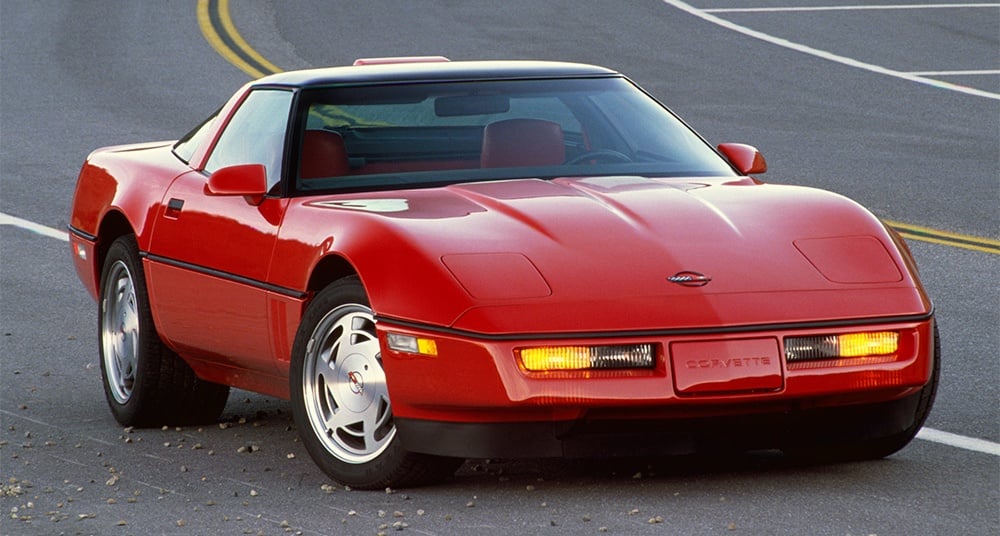
Getting down to the nitty-gritty, the grassroots of our passion, we posed a simple question to Graeme Hunt: what’s good value and affordable in today’s marketplace? “Simple,” he answers, “a Chevrolet Corvette C3 or C4.” It might seem like a left-field choice, but the esteemed gentleman dealer speaks from experience. “I had a C3 that had been lightly breathed on,” he continues. “I took it on a rally and it was every bit as quick as a Porsche Carrera RS Lightweight. What’s more, they’re extraordinary value for money – for a couple of cornflake boxes, a few conkers, and the loose change in your pocket, you can truly live the American Dream with your very own ’Vette.” The C3 was offered in so many guises that studying for a degree in neuroscience is probably more straightforward. But the long and short of it is this: buy an early chrome-bumpered car with matching numbers and a manual gearbox. “You won’t regret it,” Hunt concludes.
Not all clubs are created equal
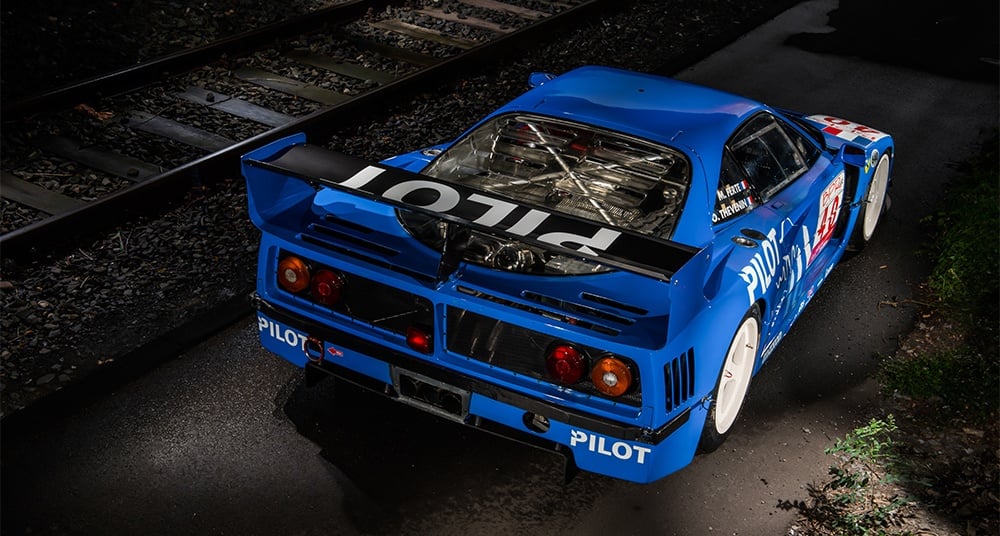
‘Not all clubs are the same’ Ferrari states on the presentation brochure for its new Club Competizione GT, a new non-competitive factory programme for Ferrari GT racing cars built between 1993 and today, poised to take place at five circuits around the world in 2019. And it’s got a point – the thought alone of 348 GT Competiziones and F40 GTEs sharing the asphalt of Mugello and Indianapolis with 575 GTCs and 458 Italia GT2s is enough to send your pulse racing. And the new initiative is one that Jan Lühn, a strong advocate and collector of these special Ferrari racers, believes will only heighten interest and, ultimately, values moving forward.
“Ferrari was well aware of the increased values of its modern racing cars and believed there was enough interest and were enough cars to run such a programme,” he comments. “And even if values of the most significant Works cars have doubled or even tripled in the last two years, I still believe they’re undervalued. Club Competizione GT will only serve to lend them more credibility.” He cites their rarity, straightforwardness to run, safety in comparison to 1950s and ’60s cars, and approachability as just some of the factors that make them so attractive to new collectors. Plus, with the emergence of not only Club Competizione but also the Masters and Global Endurance Legends series’, there are myriad opportunities to actually get out and use the cars as intended. Jean Guikas of GTC Guikas is of the same opinion, having seen younger customers less motivated by older historic Ferraris. “We had three Ferrari 575 GTCs for sale,” he comments. “We sold two very easily, the second of which for twice the price of the first, and we’ve had very high bids for the third, which has Le Mans history. But we’re going to keep that and I’m going to drive it in the series myself.”
Looking for the right car with which to enter Club Competizione and really make a statement with the big boys in the XX and F1 Clienti programmes? You’re in luck: RM Sotheby’s has just consigned the most successful F40 LM – a car James Cottingham described to us as the F40 – to its Paris sale in February.
Z for Zagato

Among the numerous automotive anniversaries due to be celebrated in 2019 is the centenary of Zagato, the great Milanese design house that has long shaped the metal of legendary, performance-oriented cars. Senior specialist at Gooding & Company David Brynan believes that the raft of shows poised to mark the milestone anniversary will shed new light on Zagato’s beautifully diverse back catalogue. “There’s going to be lots of shows around the world featuring Zagato cars and I expect everything from the Alfa Romeo Junior Z to the more exotic and challenging coach-built specials to be very popular,” he explains. Contrary to the fortifying market-wide trend for younger cars, Brynan notes that many new collectors entered the pre-War market in 2018, though they were buying top-tier sporting machines that offer exciting driving experiences rather than vast saloons with formal bodies. With this in mind, keep an eye out for Zagato-bodied Alfa Romeo 6 and 8Cs, particularly at Villa d’Este and Pebble Beach.
What goes around comes around
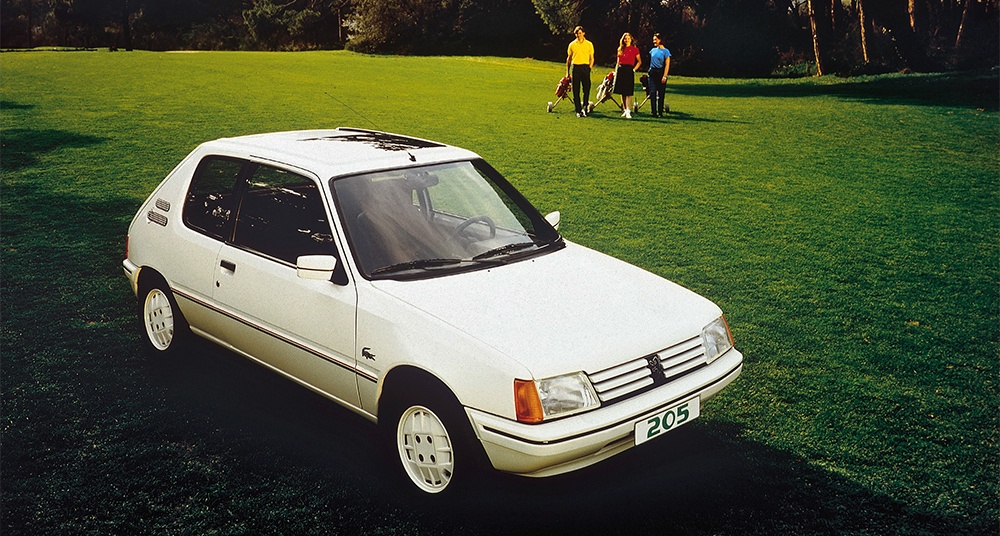
If you’d have told fashionistas 30 years ago that one day people would queue for days to pay through the nose for a toaster or a house brick plastered with a designer label, they’d have said you were bonkers. Back then, fashion didn’t bleed into other worlds to the frankly ridiculous extent it does today. But when it did, the outcome was often more novel as a result. Take the Peugeot 205 Lacoste, for example, an authentic fashion special edition the likes of which Arthur Kar, a man himself rooted in contemporary fashion, believes will become more sought after in 2019. “It’s a limited-edition version of the 205 painted in white with Lacoste’s crocodile logos on the side,” he explains. “It was unusual to see back then – the 205 was the French people’s car yet this one was rather elegant.” Just 23,000 were built, which when you consider Peugeot built over five million 205s in total, makes it exceptionally rare. “Find an original example in good shape, keep it, and use it,” Kar concludes. In a market as discerning as ever, particularly when it comes to younger classics, rarity and originality have shot to the top of many people’s criteria. It just so happens that this one fits the affordable bill as well.
Photos: Classic Driver Market / RM Sotheby's / Peugeot / GM



























